Related Research Articles

The Rockefeller University is a private biomedical research and graduate-only university in New York City, New York. It focuses primarily on the biological and medical sciences and provides doctoral and postdoctoral education. It is classified as a "Special Focus – Research Institution". Rockefeller is the oldest biomedical research institute in the United States.
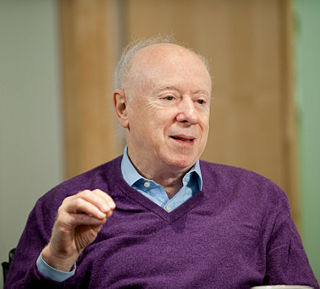
Joseph Leonard Goldstein ForMemRS is an American biochemist. He received the Nobel Prize in Physiology or Medicine in 1985, along with fellow University of Texas Southwestern researcher, Michael Brown, for their studies regarding cholesterol. They discovered that human cells have low-density lipoprotein (LDL) receptors that remove cholesterol from the blood and that when LDL receptors are not present in sufficient numbers, individuals develop hypercholesterolemia and become at risk for cholesterol related diseases, notably coronary heart disease. Their studies led to the development of statin drugs.
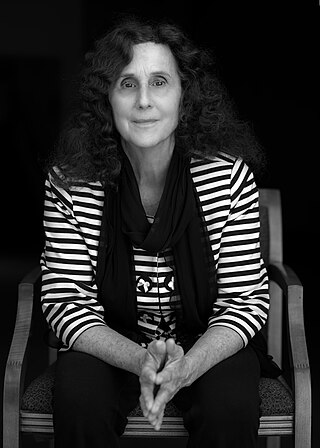
Pamela Jane Bjorkman NAS, AAAS is an American biochemist and molecular biologist. She is the David Baltimore Professor of Biology and Biological Engineering at the California Institute of Technology (Caltech). Her research centers on the study of the three-dimensional structures of proteins related to Class I MHC, or Major Histocompatibility Complex, proteins of the immune system, and proteins involved in the immune responses to viruses. Bjorkman's goal is to improve current therapeutic applications. Bjorkman is most well known as a pioneer in the field of structural biology.

Peter Walter is a German-American molecular biologist and biochemist. He is currently the Director of the Bay Area Institute of Science at Altos Labs and an emeritus professor at the Department of Biochemistry and Biophysics of the University of California, San Francisco (UCSF). He was a Howard Hughes Medical Institute (HHMI) Investigator until 2022.

Jeffrey M. Friedman is a molecular geneticist at New York City's Rockefeller University and an Investigator of the Howard Hughes Medical Institute. His discovery of the hormone leptin and its role in regulating body weight has had a major role in the area of human obesity. Friedman is a physician scientist studying the genetic mechanisms that regulate body weight. His research on various aspects of obesity received national attention in late 1994, when it was announced that he and his colleagues had isolated the mouse ob gene and its human homologue. They subsequently found that injections of the encoded protein, leptin, decreases body weight of mice by reducing food intake and increasing energy expenditure. Current research is aimed at understanding the genetic basis of obesity in human and the mechanisms by which leptin transmits its weight-reducing signal.
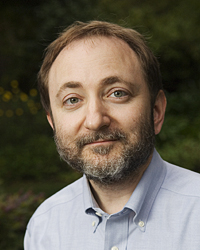
Andrew Zachary Fire is an American biologist and professor of pathology and of genetics at the Stanford University School of Medicine. He was awarded the 2006 Nobel Prize in Physiology or Medicine, along with Craig C. Mello, for the discovery of RNA interference (RNAi). This research was conducted at the Carnegie Institution of Washington and published in 1998.

Paul Lawrence Modrich is an American biochemist, James B. Duke Professor of Biochemistry at Duke University and Investigator at the Howard Hughes Medical Institute. He is known for his research on DNA mismatch repair. Modrich received the Nobel Prize in Chemistry 2015, jointly with Aziz Sancar and Tomas Lindahl.
Robert Tjian is a Hong Kong-born American biochemist best known for his work on eukaryotic transcription. He is currently professor of biochemistry and molecular biology at the University of California, Berkeley and an Investigator of the Howard Hughes Medical Institute (HHMI). On April 1, 2009, Tjian became the President of HHMI. On August 4, 2015, he announced that he would step down as President at the end of 2016.
The Wiley Prize in Biomedical Sciences is intended to recognize breakthrough research in pure or applied life science research that is distinguished by its excellence, originality and impact on our understanding of biological systems and processes. The award may recognize a specific contribution or series of contributions that demonstrate the nominee's significant leadership in the development of research concepts or their clinical application. Particular emphasis will be placed on research that champions novel approaches and challenges accepted thinking in the biomedical sciences.
Xiaowei Zhuang is a Chinese-American biophysicist who is the David B. Arnold Jr. Professor of Science, Professor of Chemistry and Chemical Biology, and Professor of Physics at Harvard University, and an Investigator at the Howard Hughes Medical Institute. She is best known for her work in the development of Stochastic Optical Reconstruction Microscopy (STORM), a super-resolution fluorescence microscopy method, and the discoveries of novel cellular structures using STORM. She received a 2019 Breakthrough Prize in Life Sciences for developing super-resolution imaging techniques that get past the diffraction limits of traditional light microscopes, allowing scientists to visualize small structures within living cells. She was elected a Member of the American Philosophical Society in 2019 and was awarded a Vilcek Foundation Prize in Biomedical Science in 2020.
Zhijian "James" Chen is a Chinese-American biochemist and professor in the department of molecular biology at University of Texas Southwestern Medical Center. He is best known for his discovery of mechanisms by which nucleic acids trigger innate and autoimmune responses from the interior of a cell, work for which he received the 2019 Breakthrough Prize in Life Sciences.

James Patrick Allison is an American immunologist and Nobel laureate who holds the position of professor and chair of immunology and executive director of immunotherapy platform at the MD Anderson Cancer Center at the University of Texas.

Karl Alexander Deisseroth is an American scientist. He is the D.H. Chen Foundation Professor of Bioengineering and of psychiatry and behavioral sciences at Stanford University.
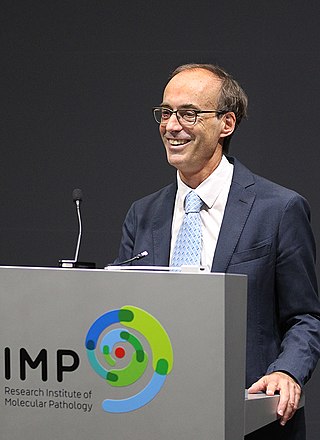
Ronald David Vale ForMemRS is an American biochemist and cell biologist. He is a professor at the Department of Cellular and Molecular Pharmacology, University of California, San Francisco. His research is focused on motor proteins, particularly kinesin and dynein. He was awarded the Canada Gairdner International Award for Biomedical Research in 2019, the Shaw Prize in Life Science and Medicine in 2017 together with Ian Gibbons, and the Albert Lasker Award for Basic Medical Research in 2012 alongside Michael Sheetz and James Spudich. He is a fellow of the American Academy of Arts and Sciences and a member of the National Academy of Sciences. He was the president of the American Society for Cell Biology in 2012. He has also been an investigator at the Howard Hughes Medical Institute since 1995. In 2019, Vale was named executive director of the Janelia Research Campus and a vice president of HHMI; his appointment began in early 2020.
Roeland "Roel" Nusse is a professor at Stanford University and an investigator at the Howard Hughes Medical Institute. His research was seminal in the discovery of Wnt signaling, a family of pleiotropic regulators involved in development and disease.
Mark A. Krasnow is a Professor of Biochemistry at Stanford University School of Medicine. He earned his B.S. in Biology and Chemistry from the University of Illinois in 1978, his Ph.D. in biochemistry in 1983, and his M.D. in 1985 from The University of Chicago under the guidance of Nicholas R. Cozzarelli. He did his postdoctoral work on the Ultrabithorax gene with David Hogness at Stanford University. He has been a professor at Stanford since 1988 and is currently the chair of the program. His research is focused on understanding the molecular, genetic, and cellular mechanisms of tracheal development using drosophila and mice. He has been a Howard Hughes Medical Institute (HHMI) investigator since 1997 and is a Fellow of the American Association for the Advancement of Science and the American Academy of Arts and Sciences. He has been elected as the National Academy of Medicine in 2016, and the National Academy of Sciences in 2019.

Titia de Lange is the Director of the Anderson Center for Cancer Research, the Leon Hess professor and the head of Laboratory Cell Biology and Genetics at Rockefeller University.
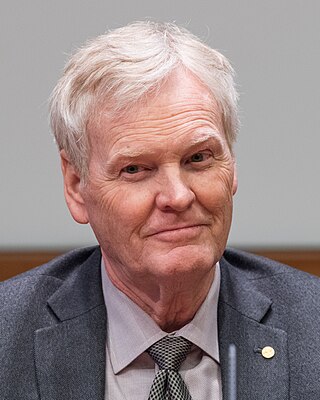
Michael Warren Young is an American biologist and geneticist. He has dedicated over three decades to research studying genetically controlled patterns of sleep and wakefulness within Drosophila melanogaster.
Hermann Steller is the head of the Strang Laboratory of Apoptosis and Cancer Biology at The Rockefeller University, and a Fellow of the American Association for the Advancement of Science.
References
- ↑ "Richard P. Lifton assumes office as the university's 11th president". The Rockefeller University. Retrieved 1 September 2016.
- ↑ Lifton, Richard Priestley (1986). The Organization And Expression Of The Drosophila Melanogaster Histone Genes And Interspersed Mobile Elements (repeated, Pseudogenes) (Ph.D.). Stanford University. OCLC 245263386 – via ProQuest.
- ↑ "Richard Lifton, M.D., Ph.D." Broad Institute. Retrieved 1 November 2012.
- ↑ Seventh Annual Wiley Prize in Biomedical Sciences Awarded to Dr. Richard P. Lifton
- ↑ "Laureates: 2014". Breakthrough Prize in Life Sciences.
- ↑ "Richard P. Lifton, M.D., Ph.D." HHMI. Retrieved 1 November 2012.
- ↑ "Richard P. Lifton named 11th president of The Rockefeller University". Rockefeller University. Retrieved 5 May 2016.